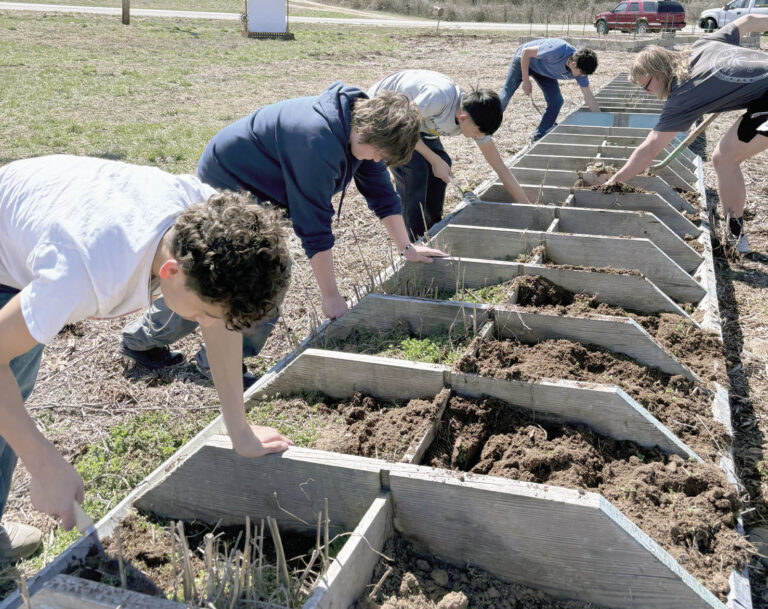Ozarks Region Deputy Director Carl Bonnell says he doesn’t put too much stock in visitor counts at individual Missouri state parks, perhaps because the revenue generated within parks represents the smaller fraction (25%) of the total revenue upon which the parks system budgets.
The remaining 75% of operating and developmental expenses are covered by the constitutional, 1/10-cent Parks, Soils and Water Sales Tax, first approved by Missouri voters in 1984, and reapproved multiple times since then.
According to numbers published on the Missouri State Parks website, of the 93 state parks and historic sites in Missouri, Roaring River held the position of “Most Visited” state park for three consecutive years (2020-2022), with 2021 seeing a near-record attendance of almost 2 million visitors.
In 2023, the visitor count took a 30% plunge from 2022 (and a 40% plunge from 2021), with visitors numbering slightly over 1.13 million. The decline placed Roaring River in fifth place, attendance-wise, among state parks in 2023, behind No. 1 Lake of the Ozarks, No. 2 Bennett Spring, No. 3 Sam A. Baker and No. 4 Table Rock State Park.
Roaring River Hatchery Manager Brad Farwell says the visitor count for Roaring River — based on vehicle traffic counters across the highway — is a loose estimate, partly due to traffic passing through the valley to points beyond the park.
Imprecise though the visitor count may be, according to data on the Missouri State Parks website, correlations between undulating annual visitor counts and the revenue generated within the park do exist.
The difference in trout tag sales, alone, between the near-record visitor count in 2021 and the comparatively low count in 2023, give credence to that correlation.
According to Francis Skalicky, media specialist for the Missouri Department of Conservation’s Southwest Region, 106,110 trout tags were sold in Roaring River State Park in 2023. The number represents a decline of almost 26% from its 2021 total of 141,748: the year the park’s visitor count was the highest.
Based on average trout tag prices of $4 each ($5 for adults and $3 for children aged 15 and younger), the decline in tag sales represents an estimated drop of 26% in revenue – around $142,000 – over the two-year period.
Money from trout tag sales goes into the MDC’s kitty, not the park system’s, Farwell said, and thus is not counted toward the 25% of revenue generated within the park by the park system. Nevertheless, the number of trout tags sold appears to rise and descend with the park’s visitor count.
Fishermen might argue that the drop in visitor count at Roaring River was related to a corresponding drop in the number of trout stocked in the river in 2023. That correlation bears weight.
The MDC operates four hatcheries in Missouri, including Roaring River, Montauk, Maramec Spring and Bennett Spring. According to Brad Farwell, the largest hatchery, Bennett Spring, is currently out of commission while it’s undergoing renovations.
“They’re about eight or nine months along on a two-year contract for the renovations at Bennett Spring,” said Farwell, who can’t offer an estimate on when the work will be completed.
With the top-producing hatchery off-line, Farwell says it leaves limited space for fish-rearing in the other three hatcheries, including Roaring River, the second largest hatchery of the four.
“We’re stocking a few more fish, now, than we did in 2023,” Farwell said. “We’re stocking an average of 1.8 fish per person, up from 1.5 fish per person in 2023.”
The average number typically stocked sans-renovation projects was 2.25 fish per person.
The trout-stocking decision, Farwell said, is based on a daily calculation using the previous year’s sales numbers for that day, although he said the number of fish stocked can be flexible, if need be.
“For example, sometimes we stock a few extra fish on weekends if we’ve sold more tags than expected on previous days,” he said.
While trout tag monies are directed to the MDC, a portion of state park revenue is generated through the concessionaires, who operate the Emory Melton Inn & Conference Center, the park store, and are responsible for cabin rentals.
“Concessionaires keep a percentage of the revenue, and the remainder is counted as park revenue,” said Carl Bonnell.
The split depends on the terms of the concessionaire’s contract with the park, Bonnell says.
In addition to trout tag sales, concession sales also fell sharply for the twoyear period from 2021 to 2023, as measured by an 18% decrease in lodge unit rentals — from 7,246 nights sold to 5,944 — over the two-year period.
The only revenue-generating category that remained relatively consistent over the same two-year period was for campsite rentals, which, in 2023, dropped only 2% from 2022, and 5% from 2021.
Campsite rentals constitute state park revenue.
A surprisingly large jump in campsite rentals occurred from 2020 to 2021, when rentals shot from 22,630 nights sold up to 27,047.
Former park manager Joel Topham credited that 20% leap to the COVID-19 pandemic.
“People were tired of being cooped up, and wanted to get outdoors,” he said, at the time.
Apparently, they liked what they found, since campsite rentals continue to be consistently well above their pre-COVID numbers.
In addition to fewer fish in the river in 2023, other changes occurred within the park that could have contributed to last year’s decreased visitor count: The park experienced a large turnover in staff, including a monthslong vacancy in the superintendent position, and the KISS Rebreathers dive team ceased making monthly, weekend explorations of the cave after the unexpected death of diver Eric Lee Hahn on Oct. 14, 2022.
Whether a single reason or a combination of factors were at play in last year’s decreased visitor count, both Bonnell and Farwell are optimistic about 2024.
Bonell says business has been brisk in the park so far this year, a trend that he expects to see continue.
Farwell offered more concrete optimism.
“By the end of May, we were already up 4.5% over last year with trout tag sales,” he said.



